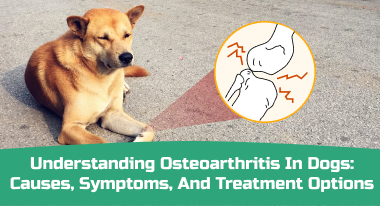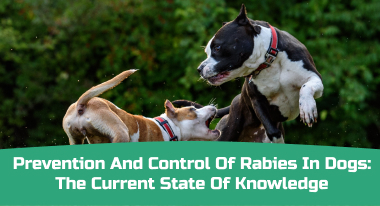Table of Contents
Just like humans, dogs experience constipation when bowel movement becomes difficult. The stool can be hard, dry, and difficult to pass. Several factors can be contributory, including diet, dehydration, lack of exercise, or underlying health issues.
In this article, we’ll help you understand constipation in dogs, and more importantly, discuss the potential solutions. Read on and uncover the do’s and don’ts for effectively dealing with the issue.
Understanding Dog Constipation
Photo by Denis Mustafaev from Pexels
A dog’s normal bowel movements vary depending on factors like diet, age, and overall health. Proper nutrition is important for a healthy dog, which will defecate once or twice a day. However, some dogs are unhealthy and may go less often. Constipation is often marked by a notable change in your dog’s bowel movement frequency or appearance of their stools.
Symptoms to look for include straining or discomfort during defecation, infrequent bowel movements, small dry or hard stools, and in more severe cases, loss of appetite or vomiting. It’s also important to monitor your dog’s behavior for signs of distress or changes in eating and drinking habits as these can also be indicative of constipation.
It’s essential to remember that constipation in dogs isn’t a disease in itself, but rather a sign of other potential health problems. While minor instances of constipation may resolve themselves with time and proper care, persistent constipation can be a symptom of more serious conditions such as inflammatory bowel disease, prostate disease, neurological disorders, or pelvic injuries.
Things To Do When Your Dog is Constipated
First, evaluate your dog’s diet to ensure it contains sufficient fiber, which aids in digestion and softens the stool. Incorporating dog-safe vegetables, such as asparagus, can be beneficial. According to the article Can Dogs Eat Asparagus? – Animalso.com, asparagus is safe. However, it’s best to remove the stalks because they can lead to choking.
In addition to introducing fiber-rich foods, consider the overall quality of your dog’s diet. A high-quality kibble for your pup that provides a balanced mix of nutrients can play a crucial role in maintaining healthy digestion.
Wet dog food possesses a higher moisture content in comparison to dry dog food, which can help to hydrate your dog and soften their stools. However, it’s always best to introduce new foods gradually and under the guidance of a vet.
It’s also vital to ensure your dog is well-hydrated, as water helps to soften the stool, making it easier to pass.
Exercise is another crucial factor to consider. Regular physical activity stimulates the dog’s digestive system, helping to promote regular bowel movements. However, this is something you should never overdo.
Gently massaging your dog’s abdomen can sometimes help stimulate bowel movements. Always use a light touch and stop if your dog seems uncomfortable. If you’re unsure about how to do this safely, it’s best to consult with your veterinarian.
Things You Should Not Do
When dealing with a constipated dog, it’s critical to avoid certain actions that could potentially worsen the situation or pose health risks.
You must avoid using human laxatives. They are not suitable for dogs and can cause serious harm. They could lead to diarrhea, dehydration, or even poisoning, so they should never be used unless explicitly recommended by your veterinarian.
Further, don’t introduce sudden changes in your dog’s diet. Abrupt changes in your dog’s diet can upset their stomach and further disrupt bowel movements. Always introduce new foods gradually and with the guidance of a vet.
Speaking of diet, you should not overfeed a constipated dog. Overfeeding can lead to constipation, particularly if your dog is consuming large amounts of low-fiber foods. Balance is key in a dog’s diet. Even when you’re trying to introduce more fiber, don’t overload their system.
Lastly, you should not subject your dog to physical stress. You might think that vigorous exercise can help get things moving, but excessive physical activity can stress your dog and exacerbate constipation. Gentle activities, such as walks, can be beneficial. Always monitor your pet’s reaction and stop if they seem uncomfortable.
When to Consult a Veterinarian
If your dog has been experiencing constipation for over 48 hours, it is advisable to consult a veterinarian near you. While a single missed bowel movement isn’t typically caused for concern, extended periods without defecation can be harmful.
In addition, if your dog is showing signs of discomfort or distress, such as straining excessively during defecation, showing a loss of appetite, vomiting, or behaving unusually, it’s crucial to seek veterinary attention immediately. Also, if your dog’s constipation is frequently recurring despite your best efforts at-home care, it’s a sign you should consult a vet.
If your dog has underlying health conditions or is elderly, it’s wise to consult a vet sooner rather than later when constipation arises. These dogs can be more vulnerable to complications from constipation.
Conclusion
Photo by Tima Miroshnichenko from Pexels
Understanding and addressing constipation in dogs is an essential aspect of responsible pet ownership. While occasional constipation can be a common occurrence, persistent issues require veterinary intervention. Maintaining a balanced diet, promoting regular exercise, and monitoring your dog’s overall health can help prevent constipation and ensure a happy, healthy life for your beloved pet.



